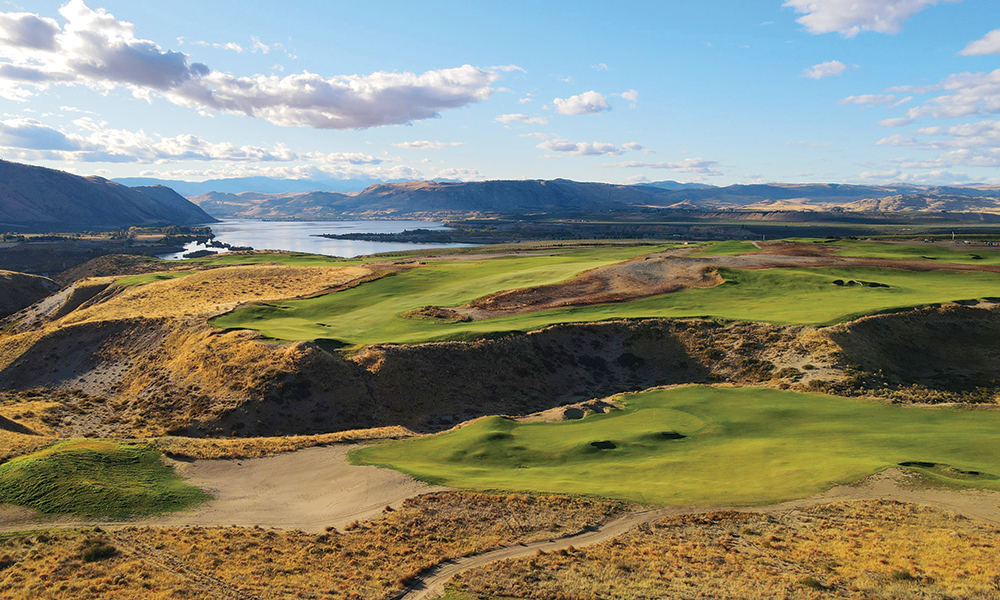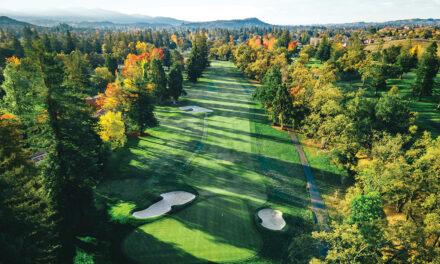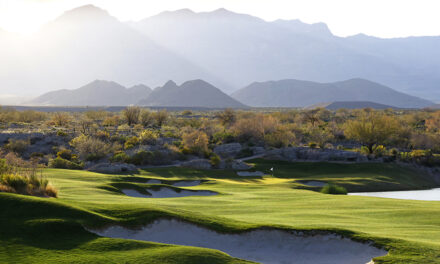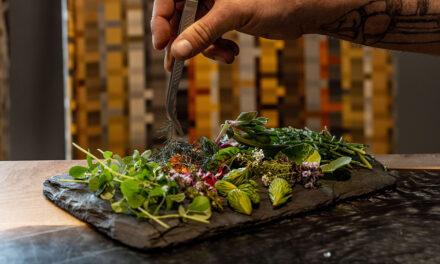Destinations
Gamble Sands
David McLay Kidd does it again with new Scarecrow Course.
What does a destination featuring the No. 1 golf course in Washington, Top 5 resort in the Pacific Northwest, and Top 20 short course in America do next? They keep their thumb on the throttle with one of the most-anticipated second-course openings in 2025 — from the creative mind of David McLay Kidd, the architect behind the original Gamble Sands and QuickSands courses on the Gebbers family ranch overlooking the historic Columbia River outside Brewster, Washington.
“Scarecrow” — DMK Design’s newest 18 holes laid out across old cornfields on what some consider to be the best land in these rolling acres of high-desert terrain — headlines the next phase of Gamble Sands along with 40 new golf-view rooms to welcome travelers from throughout the United States and beyond seeking an unforgettable, immersive golf experience in an extraordinary location.
Asking the same design company for an encore isn’t exactly the industry standard, but the Gebbers family knew they wanted McLay Kidd to put yet another mark on their growing golf retreat.
“He earned our trust. He works hard. We knew that he wanted it, and he wanted it for us,” said Gamble Sands’ Project Manager Tory Wulf. “This family is built on a lot of relationships in our business transactions, and we wanted to stick with David. We knew what he and his team could produce. And we felt going into the second golf course, ‘What’s the point of changing what you already know?’ We had all the faith in the world — and we had a great working relationship.”
Building a third attraction at what has already become one of the game’s favorite playgrounds would require a different line of thinking. McLay Kidd and his team embraced the challenge.
SIBLINGS BUT NOT TWINS
“We wanted to make sure that the DNA of things that are loved about the first course transferred to the new course — the simplicity of it falling across the landscape, the ease of getting off the tee (you might not be in a scoring lane, but you can get it in play),” McLay Kidd says. “But lots of other things — green shaping, the size of things, the aggressiveness of the bunkering, the contouring of the fairways — that’s all different. There’s a DNA transfer, but it’s a bit like having kids: You can have two kids who are very different, but they share a bunch of DNA. And that was our intention: How do we make that happen, create that internal design tension to make sure these two courses are siblings but not twins?”
With the success of the original Gamble Sands course on McLay Kidd’s resume, he took a step back and played “editor” to the work of DMK lead design associate Nick Schaan on Scarecrow, creating a bit of internal competition among the team. The result? Scarecrow has opened with strong reviews from those who have seen an early glimpse of the course, which officially opens for public play on August 1.
“We had a whole different team internally work on this,” McLay Kidd says. “And I kept pushing that other team, saying: ‘You guys can do what you like — you’re never going to beat the first course.’ Of course, that was a red rag to a bull. They were like, ‘Watch this.’”
Schaan used Scarecrow’s dramatic terrain to the team’s advantage, creating tactical contrasts without sacrificing the playability that helped launch Gamble Sands into the golf world’s hearts and minds when it was named Best New Course back in 2014.
“The greens are smaller,” Schaan explains. “Once we got out onto the site and were walking around and looking at the tightness and the steepness of the contours, the greens needed to be smaller to fit fit into the spaces that made good green sites. But there’s still tons of turf around the actual cuppable areas because all the steeper contours that you can’t count as ‘green’ you can still use to roll a ball around. It’s different but the playability is the same.”
And Scarecrow oversees different vantage points.
“This part of the property has higher, peakier spots that were more akin to classic sand-dune, sandhills-type blowouts — and we exposed some of those, we preserved some of those,” Schaan says. “This new course sits on about 300 acres, so it’s a lot more compact, things are a bit closer together. But the fairways are still wide; in some cases, they are even wider. The whole golf course kind of climbs over this knob, through a saddle, up another nob, through a valley — you see a lot more of the river, hole after hole after hole. And you see a lot more golf that you’re not playing across the site.”
WHICH ONE IS BETTER?
The result is a Gamble Sands-Scarecrow one-two punch that will ignite conversations among guests about which course is their favorite. McLay Kidd and Schaan have already had their own good-natured back-and-forth on which holes are better when comparing the two tracks.
And everyone on the design and operations teams welcomes the wrangling. That’s the fun of sitting around one of the resorts two restaurants — or at the firepits overlooking Gamble Sands’ 18th green — after a couple days playing both courses.
“We want the argument — we want players to sit down and say, ‘Which one is better, which one do you like better and why?’ Wulf says. “If those answers are always one-sided, then they haven’t done their job.”
Schaan points out the growing Gamble Sands destination will attract golfers for longer stays — and that should ultimately settle which course “wins” the competition: “With travel schedules and the number of nights guests will now be staying at Gamble Sands, most are probably going to play at least three rounds. And we’ve talked about it — when they’re deciding which course they are going to play twice, we want there to be a question.” ▪
Gamble Sands
Brewster, WA
(509) 436-8323
www.GambleSands.com









